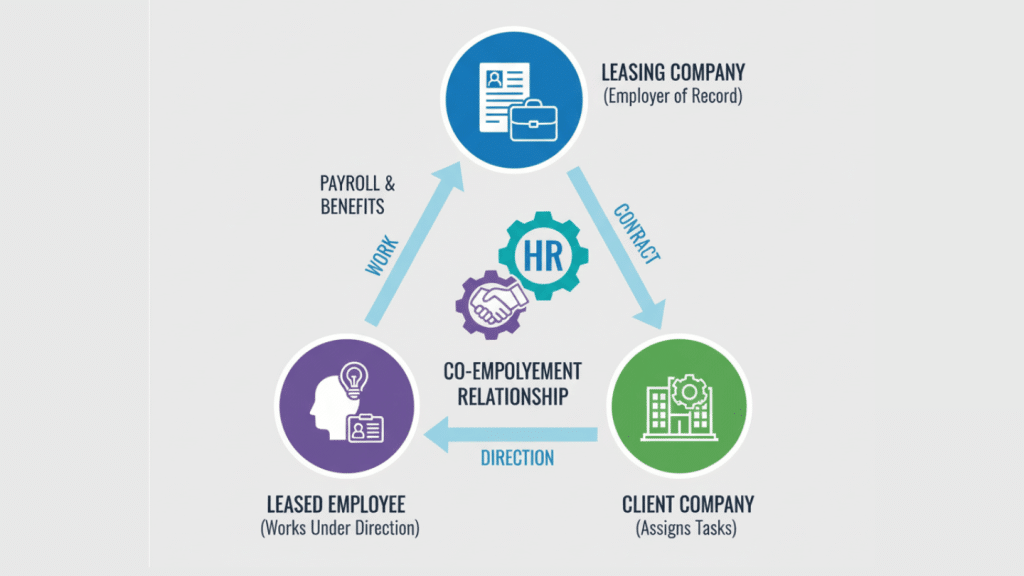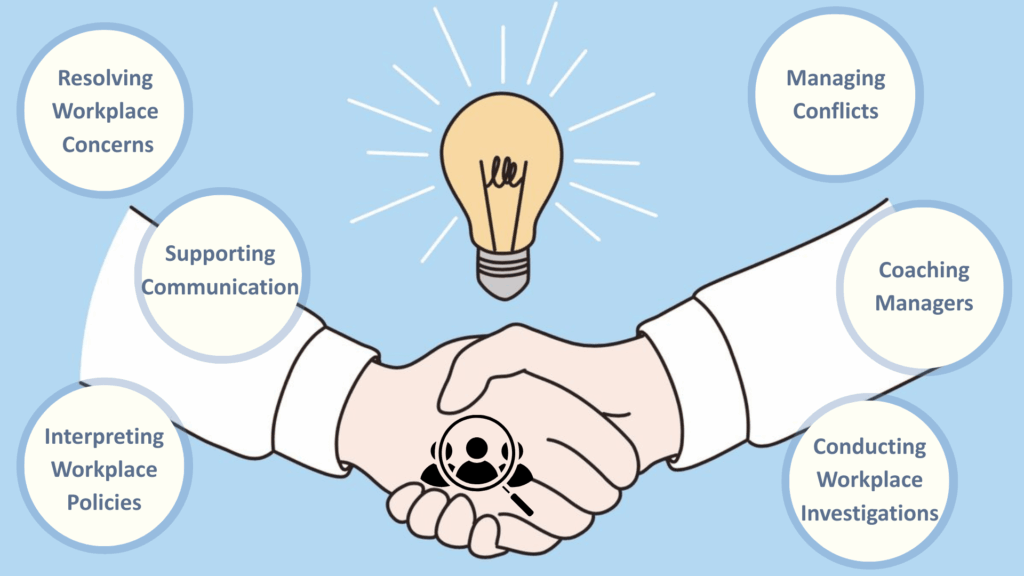Running a business means juggling endless tasks, from managing daily operations to handling payroll and staying compliant with employment laws.
Many business owners end up buried in administrative work instead of focusing on growth.
Staffing agencies place over 12 million workers each year in the United States, yet the difference between staffing and employee leasing often remains unclear.
Employee leasing offers a way to access skilled workers.
Shifting the HR responsibilities to a provider allows you to concentrate on growing your business effectively.
Definition of Employee Leasing
Employee leasing began in the late 1960s in the United States under the name “labor leasing.”
It is a business arrangement where a company brings in workers through a third-party organization rather than hiring them directly.
In its early days, the model allowed companies to avoid obligations such as pension plans, and it was later formalized in the 1980s.
In this setup, the leasing company becomes the official employer of record, handling payroll, benefits, taxes, and compliance.
Whereas the client company manages the employees’ day-to-day work.
What is a Leased Employee?
A leased employee (also known as a temporary employee) is someone who is hired and paid by a different company than the one for which they provide services.
In simple words, a leased employee is someone hired by one company but who works for another company.
The IRS has rules on when leased employees may be treated as regular employees.
Factors include the duration of the assignment, the degree of control exercised, and whether they work alongside regular staff.
Employee Leasing in HRM

Employee leasing plays a vital role in modern human resource management (HRM).
This arrangement allows HR teams to focus on strategic initiatives such as workforce planning, employee engagement, and organizational growth..
The process involves three parties: the leasing company, the client company, and the leased employee.
Today, it has grown into a well-recognized HR practice used by businesses of all sizes
Leasing helps HR managers reduce risk by shifting liability to the leasing company.
It also adds workforce flexibility to meet changing demand and lowers costs by minimizing recruitment and training expenses.
How Employee Leasing Differs from Other Models?
Businesses exploring alternatives usually come across terms like PEO (Professional Employer Organization), staffing agencies, and EOR (Employer of Record).
Each of these models has its own structure, cost implications, and best-fit use cases.
1. Employee Leasing vs PEO
| Factor | Employee Leasing | PEO (Professional Employer Organization) |
|---|---|---|
| Workforce Source | The leasing company supplies the employees. | Business already has its own employees. |
| Employment Relationship | The leasing company is the legal employer. | PEO becomes a co-employer. |
| Responsibilities | Leasing provider manages HR administration (payroll, benefits, compliance). | PEO handles HR tasks (payroll, benefits, compliance) while sharing employer responsibilities. |
| Client’s Role | Limited control over worker assignment. | Full control over hiring, firing, and daily management. |
| Best For | Project-based, seasonal, or short-term needs with outsourced HR. | Long-term HR support, access to better benefits, and development of existing workforce. |
2. Employee Leasing vs Staffing Agency
| Factor | Employee Leasing | Staffing Agency |
|---|---|---|
| Primary Function | Provides workers who remain employed by the leasing company. | Recruits candidates and connects them with employers. |
| Employer Relationship | The leasing company is the employer of record. | The employer hires the candidate directly. |
| Control over Hiring | Client has limited control — workers are assigned. | Client interviews and selects candidates directly. |
| Service Duration | Workers stay for the contract period and return to the leasing company. | The agency’s role ends once the candidate is hired. |
| Best For | Immediate staffing needs with HR tasks managed by the leasing provider. | Businesses want permanent hires and full control over selection. |
3. Employee Leasing vs EOR
| Factor | Employee Leasing | EOR (Employer of Record) |
|---|---|---|
| Scope | Typically, domestic workforce solutions. | Specializes in international hiring. |
| Role | The leasing company manages payroll, compliance, and benefits for leased workers. | EOR becomes the full legal employer in another country. |
| Liability | Shifts risk and HR responsibility to the leasing provider. | Assumes broader liability, especially for cross-border compliance. |
| Cost | Generally lower, suited for short-term or domestic projects. | Higher due to complex compliance management. |
| Best For | Companies needing project-based or seasonal staff within the U.S. | Companies expanding globally or hiring workers where they lack a legal entity. |
Services Offered by Employee Leasing
Not all employee leasing providers offer the same services or serve the same markets.
Most companies offer standard HR functions like payroll and benefits, but services can vary significantly between providers.
Some specialize in specific industries or types of work, while others provide broad support across multiple sectors.
Knowing these differences helps you make a smart choice for your business.
Employee Leasing Arrangement
In a leasing arrangement, the client company directs the employees’ daily tasks and supervises their work performance.
While the leasing provider remains the official employer on record.
This balance allows businesses to maintain control over day-to-day operations without taking on the full responsibilities of employment administration.
Leasing agreements can be structured for short-term projects, seasonal demands, or longer periods, depending on business needs.
Conclusion
Employee leasing is more than a way to cut costs or outsource HR tasks.
It can also shape company culture, since leased employees perform best when they feel integrated and valued.
For growing businesses, leasing offers scalability, making it easier to test new markets or roles before committing to permanent hires.
However, reviewing contracts and compliance details is essential to avoid risks.
When used strategically, employee leasing becomes not just a staffing solution but a long-term tool to align workforce needs with business goals.
Do you believe that leased employees can truly feel integrated into a company’s culture?
Drop your thoughts in the comments.
Frequently Asked Questions
Is Employee Leasing Allowed in Every U.S. State?
Yes, it’s legal nationwide, but rules vary. Some states require licensing or registration, so always confirm your provider complies with state-specific regulations before signing agreements.
Do Leased Employees Qualify for Company Culture Programs, Like Training or Team Events?
Legally tied to the leasing provider, but businesses often include leased employees in training, events, or wellness programs to boost integration, teamwork, and performance.
How Does Employee Leasing Affect Taxes for the Client Company?
Leasing providers handle payroll taxes, unemployment insurance, and workers’ comp. However, client companies may still consider leased workers when calculating tax credits or benefit eligibility.
Can Employee Leasing Support Businesses During Mergers or Expansions?
Yes, leasing ensures staffing continuity during transitions. It also lets businesses test new markets or roles without permanent hiring, reducing risk during mergers, acquisitions, or expansions.










